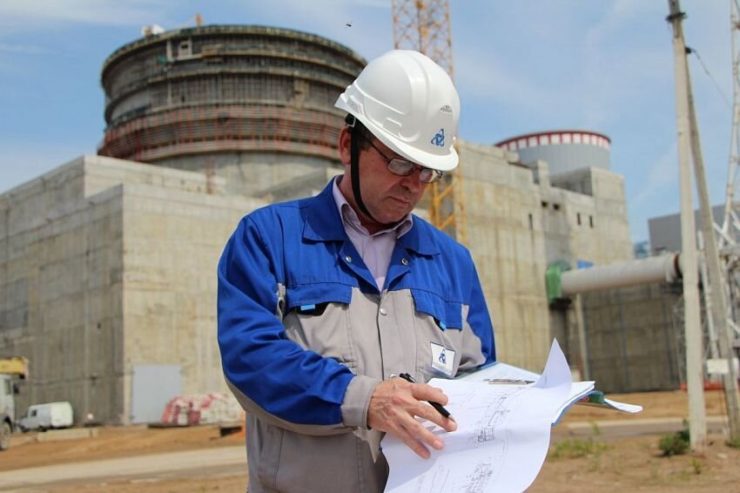
Low-capacity nuclear power plants are one of the most promising areas that determine the key trends in the development of nuclear energy on a global scale. Once complex, dangerous, labour-intensive and science-intensive NPP development projects, the cost of implementation of which implied economic profitability only in case of impressive scale and capacity of the projects, could be implemented only in the most developed countries of the world. Now such projects, especially due to the scientific breakthrough in the development of low-capacity power plants, have become available to a much larger number of countries. The promising project of Rosatom and Kyrgyzstan may become one of the pioneers in introducing a new type of NPP into the practice of small developing countries.
A memorandum on the construction of a low-capacity NPP in Kyrgyzstan was signed in January 2022 on the margins of Expo 2020 in Dubai. At that time, representatives of the republic’s Ministry of Energy were interested in Rosatom’s promising developments in the field of low-power reactors, which the company brought with it to the UAE for demonstration to potential partners. In accordance with the memorandum, the parties expressed mutual interest in developing energy projects in Kyrgyzstan based on the RITM-200 reactor unit.
In November, the republic’s Ministry of Energy and Rosatom Corporation signed a technical assignment for a preliminary justification of the NPP construction project. Shortly after this document appeared, the parties began discussing a project to build a small NPP with two reactors with a capacity of 50-55 MW each. However, in early 2023, the Kyrgyz government proposed to triple the capacity of the project to 300 MW, stating its readiness to put such a project for public discussion.
During a meeting between the Deputy Director General for International Activities of Rosatom State Corporation and the Minister of Energy of the Kyrgyz Republic on 2 November 2023, the parties discussed the possibilities of expanding the project’s capacity, including by combining it with a joint project to create a wind power plant in the Issyk-Kul region of the republic.
“Rosatom, being the first company in the world to launch industrial, rather than experimental, low-capacity NPP projects, is the undisputed world leader in their development. For example, several years ago, with its direct participation, the world’s first floating nuclear power plant Akademik Lomonosov, capable of supplying power to small port cities, was launched. Currently, the project of a low-capacity NPP in the Ust-Yansky district of the Republic of Sakha (Yakutia) is undergoing state environmental expertise. By the way, this project will use the RITM-200 reactor, which interested Kyrgyz representatives – the technologies used in its construction have already been tested by many years of operation on the Arktika, Ural and Siberia nuclear icebreakers: now it is the turn of the plant itself to be tested under “stationary” conditions. Commissioning of the Ust-Yanskaya NPP of low capacity is scheduled for 2028. The capacity of one reactor unit is 55 MW, according to Rosatom.
For Kyrgyzstan, small NPPs are an unobvious but very effective solution to the problems in the national energy sector. More than 90% of all electricity in the country is generated by various hydropower plants, the capacity of which strongly depends on climatic conditions. It is because of them that hydroelectric facilities have proved incapable of providing the country with a sustainable source of electricity – in some years and seasons, the country receives energy with a reserve and even exports significant surpluses, or it faces power outages and needs external supplies, mainly from Kazakhstan and Turkmenistan, the results of which are barely “in the plus”. Small NPPs can become a “financially viable” and, no less importantly, environmentally friendly alternative to the current hydroelectric power plants as a stable source of electricity for a small state – by geographical, demographic and economic indicators.
By the way, it is not only Kyrgyzstan that is interested in Rosatom’s low-capacity NPP projects. Thus, during the regular annual meeting of the joint intergovernmental group “Russia-Mongolia” held on 23 October 2023, the Russian delegation proposed that Mongolia consider the possibility of implementing such a project in the country. At that time, it was stated that the Mongolian side was interested in exploring such prospects. On 4 December of the same year, representatives of the Mongolian state-owned company Monatom took an active part in the “Day of Small Capacity Nuclear Power Plants” held by Rosatom as part of the 28th Conference of the Parties to the United Nations Framework Convention on Climate Change (COP28). During the same conference, representatives of Myanmar also expressed interest in Russian small-capacity nuclear power plants. Since the middle of 2023, representatives of Uzbekistan have also started to show interest in low-capacity NPPs, and are currently actively discussing with Rosatom details of a contract for the construction of a more traditional NPP with two high-capacity reactors.
Thus, the successful progress of this project during the 2020s may predetermine one of the main trends in the development of nuclear energy for several decades to come: the successful implementation of small NPPs – in Yakutia and Chukotka, in Kyrgyzstan, Uzbekistan, Myanmar and Mongolia – may make the “nuclear alternative” available to a number of medium and small developing countries, which a decade ago could not even think about the prospects of any peaceful nuclear projects in their country. Obviously, the Russian Federation and Rosatom will play a key role in making the atom an energy alternative available to most countries of the world.
Boris KUSHKHOV, Department of Korea and Mongolia, Institute of Oriental Studies, Russian Academy of Sciences. Especially for online magazine “New Eastern Outlook”.